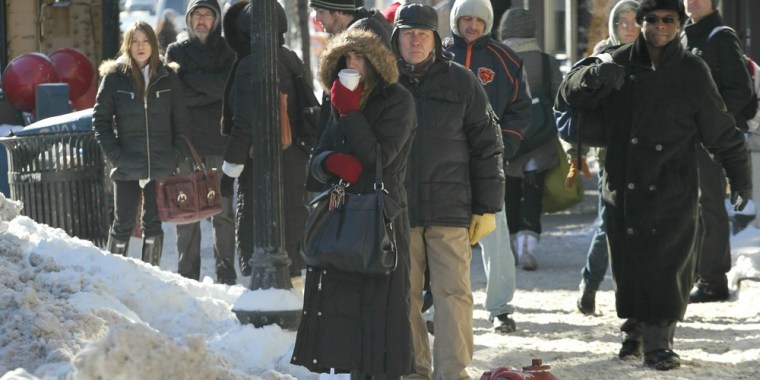High energy prices, high unemployment and a cold winter are prompting a record number of households to seek home heating assistance.
The National Energy Assistance Directors' Association will announce Wednesday that 8.9 million households are expected to qualify for financial help this winter, up from 8.3 million last winter. It's the third year in a row the number of households needing assistance has set a new high.
The chief reason is the economy, according to Mark Wolfe, Executive Director of NEADA. "We have this group who weren't poor before the recession, who are poor now and scrambling for whatever they can get," Wolfe says. "It's a tough situation."
Congress doubled funding for the program, called Low Income Home Energy Assistance Program, or LIHEAP, to $5.1 billion two years ago and matched that level last year. Congressional Republicans are expected to try to pare that back during budget negotiations next week.
Three House Democrats, Edward Markey of Massachusetts, Rosa DeLauro of Connecticut and Gene Green of Texas are expected to call for maintaining the $5.1 billion level at a press conference scheduled for Wednesday.
"In the middle of such a harsh winter, where heating bills have piled up along with the snow, we can't leave our nation's low-income families out in the cold by cutting this energy assistance program," said Rep. Markey, the top Democrat in the House Natural Resources Committee in a statement Tuesday.
He criticized Republicans for defending tax breaks given to oil and gas companies, while putting "heating fuel assistance for America's neediest on the chopping block."
So far this winter, LIHEAP has been allocated $4.1 billion.
Wolfe says that with the additional $1 billion, the program will cover 46 percent of the average recipient's annual bill. Without it, just 42 percent of the average bill will be covered and about one million fewer households will be served.
Cold weather throughout much of the country has forced homeowners to keep the heat cranked up, and prices of some fuels rose sharply.
The average cost for a recipient to heat their home with heating oil has reached a record $2,291 this season, according to NEADA. Heating oil prices were pushed higher by crude oil prices that rose steadily throughout the fall.
Propane also reached a record high.
But electricity costs fell below last year's high. And natural gas, which is used by three-fourths of the households served, increased only slightly and remains cheaper than in recent winters. Households receiving assistance are paying $753 per year to heat their homes with natural gas this year, down from $866 in the winter of 2008-2009.
NEADA says some states are projecting an increase of at least 15 percent in the number of eligible applications for assistance. Among the states anticipating the biggest jump include Vermont (64, Florida (50%), Massachusetts (21%), Wyoming (20%), Louisiana (20%), Texas (17%), and Mississippi (15%).
Applications are projected to fall in two states, Georgia and Delaware.
